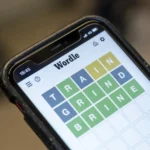Are you one of the millions of people who suffer from lower back pain due to muscle knots? This common issue can be incredibly painful and disruptive to your daily life. In this article, we will discuss the causes, symptoms, and treatment options for lower back pain caused by muscle knots.
What are Lower Back Pain Muscle Knots?
Lower Back Pain Muscle Knots also known as myofascial trigger points, are small, painful areas in the muscle that feel like a knot or a bump. These knots can develop due to muscle overuse, poor posture, stress, or injury. When you have a muscle knot in your lower back, it can cause intense pain and stiffness in the affected area.
Causes of Lower Back Pain Muscle Knots
There are several potential causes of muscle knots in the lower back. Some common triggers include:
- Poor posture: Sitting or standing with improper posture can put strain on the muscles in your lower back, leading to the development of muscle knots.
- Overuse: Repetitive movements or activities that strain the muscles in your lower back can lead to the formation of muscle knots.
- Stress: Emotional or physical stress can cause muscle tension, which may result in the development of muscle knots in the lower back.
- Injury: Trauma or injury to the muscles in your lower back can cause muscle knots to form as part of the healing process.
Symptoms of Lower Back Pain Muscle Knots
If you have muscle knots in your lower back, you may experience the following symptoms:
- Intense, localized pain in the affected area
- Stiffness and limited range of motion in the lower back
- Radiating pain that travels down the legs
- Muscle spasms or cramping in the lower back area
If you are experiencing these symptoms, it is essential to seek treatment to address the muscle knots and alleviate your pain.
Treatment Options for Lower Back Pain Muscle Knots
Fortunately, there are several effective Treatment options available for relieving lower back pain caused by muscle knots. Some of the most common treatments include:
- Massage therapy: Deep tissue massage can help release tension in the muscles and break up muscle knots in the lower back.
- Heat therapy: Applying heat to the affected area can help relax the muscles and increase blood flow, promoting healing.
- Stretching exercises: Gentle stretching exercises can help alleviate muscle tension and prevent the formation of new muscle knots.
- Physical therapy: Working with a physical therapist can help you strengthen the muscles in your lower back and improve your posture to prevent future muscle knots.
Conclusion
Lower back pain caused by muscle knots can be a challenging and painful issue to deal with. By understanding the causes, symptoms, and treatment options for muscle knots, you can take proactive steps to relieve your pain and improve your quality of life. If you are experiencing persistent lower back pain, it is essential to consult with a healthcare professional for an accurate diagnosis and personalized treatment plan. Don’t let muscle knots hold you back – take action today to address your lower back pain and get back to living your life to the fullest.
Magazin Union guides you through the latest trends and stories, providing valuable information and perspectives on current events and more.





